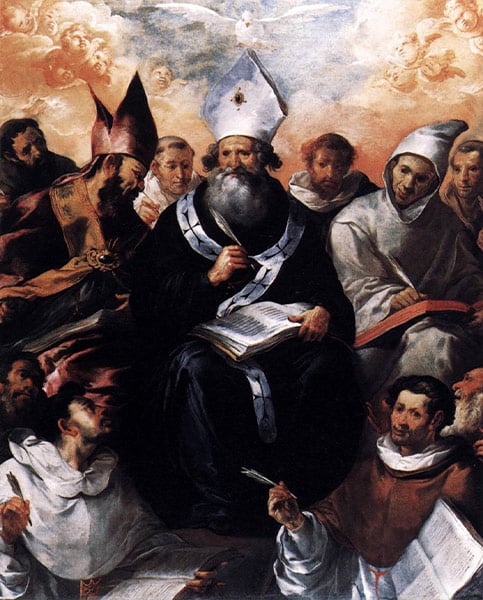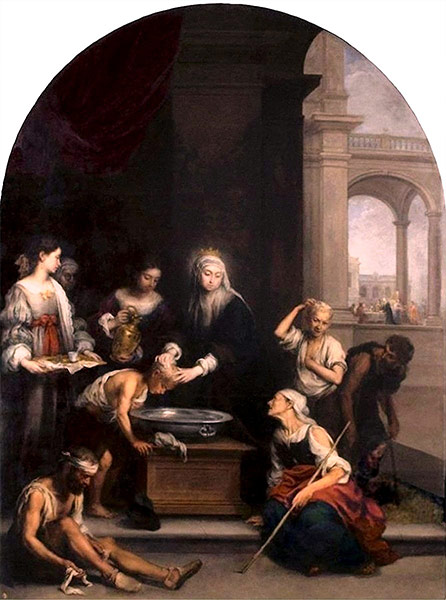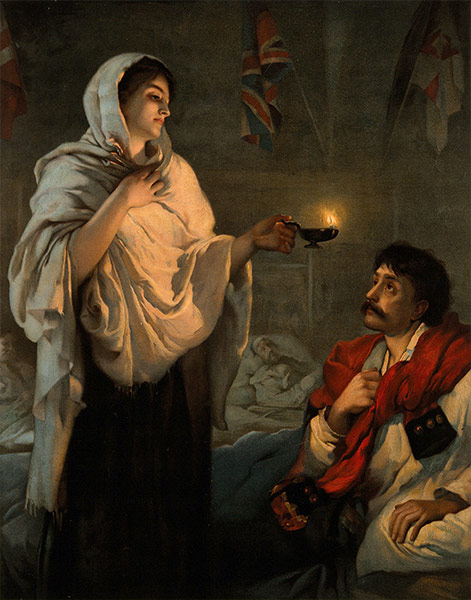Health care rooted in the Catholic Faith, Part 1: The Hospital

As we grow to appreciate the excellent medical care available in North Texas and the development of ever-expanding hospital districts, now is a good time to take note of just how it all evolved. This four-part feature takes us on a journey starting with Christ’s directives to His Apostles to heal the sick, progressing to Catholics who originated the concept of hospitals, to brilliant Catholic minds who were pioneers in the field of medicine.
It continues with perspectives on how Catholics brought medical care to the Lone Star State and their enormous contributions to health care in Texas.
Finally, it concludes with just how all these contributions of Catholics through the ages came together to shape today’s medical care in North Texas. Although area hospitals today have become mainly secularized, their genesis comes from Christ and the faithful who followed His teachings.
PART 1: The Hospital
In nations throughout the world, government health agencies are taking careful inventories of available hospital beds and medical equipment to ensure adequate care is available for those who have contracted serious cases of the coronavirus, COVID-19. Most people likely never gave much thought, if any, to how many hospital beds exist in their communities. They are taking interest now.
Approximately 924,000 staffed beds are maintained at the 6,146 hospitals across the United States, according to 2020 American Hospital Association statistics. Considering that 331 million people live in the U.S., available beds represent much less than 1 percent of the population. That translates to 2.79 beds per 1,000 people.
With those statistics in mind, it is easy to understand just how precious our hospital facilities are at this time, not to mention the importance of several million health care professionals who staff them. These people are the frontline heroes in the battle against a viral enemy, and the hospitals where they work are serving as bastions in a global fight.
Also, many unsung heroes, although they may not be with us today, laid the foundation for our health care system and for the very existence of hospitals as a critical part of a community’s infrastructure.
These were faithful Catholics who heeded Christ’s call to the Apostles when He said: “Heal the sick, raise the dead, cleanse those who have leprosy, drive out demons. Freely you have received; freely give” (Matthew 10:8).
The New Testament contains hundreds of verses related to the healing of people with physical and mental illnesses and even resurrection of the dead. Jesus did this by laying on of hands, speaking words over the sick, by invoking the faith, rebuking sickness, and casting out demons.
First hospital established by St. Basil in fourth century
One of those who took Christ’s teachings to heart and made it his mission to reverse or ease suffering for people with myriad maladies was St. Basil of Caesarea, who lived during the fourth century.

When he became an archbishop, St. Basil established a Christian monastery of a different sort near Caesarea, an ancient Mediterranean port city. At this monastery, members not only led a contemplative life centered on prayer, but also took a hands-on approach to caring for the sick and the poor. Known as “the city outside the city,” “newtown,” and “Basiliad,” the monastery consisted of what historians describe as a complex of buildings.
Within this complex, people studied diseases and developed cures, while physicians and nurses cared for people with sicknesses ranging from leprosy to those related to famine, plagues, and more.
Wayward travelers were also welcomed there, as it was a place where they could find rest and food. The Church was central to the compound, which also took in orphans, and St. Basil was successful in encouraging people who had wealth to finance his endeavor.
The whole concept of caring for the sick in this way was unprecedented, although it was met with opposition from some Christians who felt that developing medical cures was sacrilegious. St. Basil convinced his fellow Christians that medical science was actually a gift from God. He reasoned that God created plants, minerals, and sea creatures to feed people and gave humans the intellectual ability to use them as cures.
From St. Basil, the concept of hospitals as we know them today, was born.
Although today’s hospitals have been mostly secularized, their genesis began with the deeply rooted Christian Basiliad established by St. Basil.
When we see hospital buildings containing operating rooms and patient beds, staffed with lab technicians, doctors, therapists, nurses, cafeteria workers, and other necessary personnel, we are witnessing the advancement of the healing monastery complex developed by St. Basil around 370 A.D.
Early hospital system makes advances
During medieval times, from the fifth century fall of Rome to the 14th century Renaissance period, religious groups of men and women were carrying forth St. Basil’s organized approach to caring for the sick. Monastic hospitals were increasing in numbers, especially among the Benedictines.
A case in point was the Benedictine St. Mary of the Latins monastery, established next to the Church of the Holy Sepulchre in Jerusalem. The religious brothers there provided hospitality to visiting pilgrims and eventually established a hospital. The order’s increasing care for the sick became so important and exemplary that Pope Paschal II declared in the year 1113 that the brothers of the hospital, to be known as the Hospitallers, would become the first international religious order. They would be accountable to only the pope.

Along with monastic men, religious women were also becoming increasingly active in expanding the hospital system in the mission to care for the sick.
Saint Elizabeth of Hungary, who lived during the 13th century, is a stellar example of how Christ’s teaching about caring for the sick was sweeping through Europe. Born the daughter of a Hungarian king and married to one of the rulers of Thuringia, now a German state, St. Elizabeth chose to live a simple life. Influenced by the Franciscans and their teachings about St. Francis of Assisi, she became a strong follower. Towards the end of her young life, she founded a hospital for the poor in honor of St. Francis of Assisi.
Miraculous healings have been attributed to the compassionate caregiver both before and after her death. St. Elizabeth was canonized only four years after she died.
Catholics lead in medical research, patient care, nursing and training
Throughout history, human health has been threatened on several fronts. From human-made wars to natural disasters, from microbes to pathogens, from famines to pestilence, agents of human harm have been at odds with our species.
The first recorded pandemic, the Justinian Plague, reportedly killed half of Europe’s population from 541 to the 700s. Another major contagion, the Bubonic Plague in the 1340s, was responsible for 25 million deaths in Asia and Europe.
Help was on the way during the long Renaissance era from the 14th to 17th centuries in the form of the great minds of Catholics who made major discoveries leading to later advancements in medicine.
Foremost among them was Pope Paul III’s personal physician, Girolamo Fracastoro. A true Renaissance man, Fracastoro was not only a physician, but also a poet, astronomer, and geologist.
In 1546, Fracastoro’s work titled “De Contagione et Contagiosis Morbis” (“On Contagion and Contagious Diseases”) detailed how infectious diseases are caused by rapidly multiplying, minute bodies that can be transferred from an infector to the infected in three ways — by direct contact, by indirect contact on carriers such as soiled clothing and linens, and through the air over long distances.
Later researchers would advance the teachings of Fracastoro, a true pioneer in the field of epidemiology — a branch of medical science dealing with the incidence, distribution patterns, and control of disease in distinct populations.

In the 19th and 20th centuries, religious orders of Catholic women took on colossal roles in the medical field around the world, caring for the sick and serving as administrators, contractors, and builders of hospitals. They also took the lead with excellence in education when it came to teaching and training nurses.
The founder of modern nursing, Florence Nightingale, was trained at such a Catholic institution by religious women who were outstanding in the field of medical care.
Although not Catholic herself, Nightingale was a Christian whose faith guided her to help the sick. When it came time for her nursing training in 1850, Nightingale chose to be with the Catholic sisters at the Institute of Saint Vincent de Paul in Alexandria, Egypt.
After supervising a hospital in England, where she dealt successfully with a cholera epidemic, Nightingale gained a reputation for lowering death rates through sound hygiene and nursing practices.
In 1854, the British secretary of war asked Nightingale to direct all nursing operations on the Crimean War front for British and allied soldiers. Nightingale recruited 38 volunteer nurses, many from various Catholic convents for religious women in England and Ireland. Nightingale, the sisters, and the lay nurses were credited with reducing the death rate among wounded soldiers from 40 percent to 2 percent.
Nightingale described the religious order women who served as nurses with her:
“What training is there compared with that of a Catholic nun? Those ladies who are not Sisters have not the chastened temper, the Christian grace, the accomplished loveliness and energy of the regular nun.”
During the U.S. Civil War, Nightingale was often asked to lend her expertise for best management practices at field hospitals.
In addition, many of the Sisters of Mercy who served with Nightingale during the Crimean War also assisted in America’s war between the states. They were joined by several hundred religious women, on both sides of the Mason-Dixon line, to tend to the casualties of war.
Catholic Church brings Christ’s blessings to sick around the world
In 2010, the Pontifical Council for Pastoral Assistance to Health Care Workers stated that the Catholic Church was managing 26 percent of health care facilities in the world.
Today, the Catholic Church maintains about 5,500 hospitals, 18,000 health clinics, and 16,000 homes to care for the elderly and people with special needs, according to recent reports. Most of these are in developing nations around the world.
From the earliest times to the present, those who have served in the field of medicine have honored Christ’s teachings: “Amen, I say to you, whatever you did for one of these least brothers of mine, you did for me” (Matthew 25:40).
